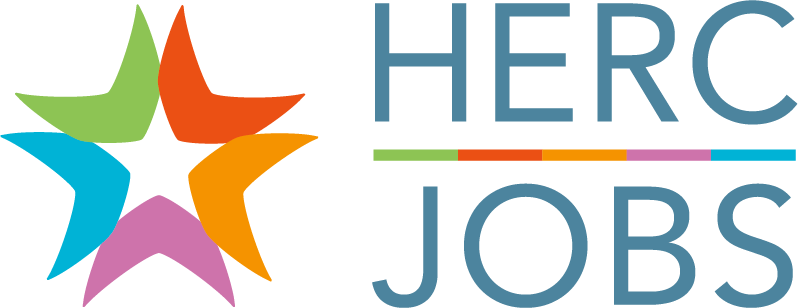
In today’s colleges and universities, technology has moved from the background to the forefront of institutional strategy. From cybersecurity and cloud integration to data analytics and digital learning environments, higher education now depends on advanced information technology systems. Yet many campuses face a growing challenge: a shortage of skilled tech professionals to sustain and advance this transformation.
As institutions strengthen digital infrastructure and expand online offerings, the demand for tech talent has surged. For professionals seeking meaningful, stable, and mission-driven work, academia offers a compelling—and often overlooked—career path.
The Changing Technology Landscape in Higher Education
Technology in higher education is evolving rapidly, reshaping nearly every aspect of campus operations. The pandemic accelerated digital transformation, driving institutions to adopt new tools for online instruction, hybrid classrooms, and virtual collaboration. Today, colleges are investing long-term in systems that make education more flexible, accessible, and data-informed.
Digital transformation is redefining how campuses operate. Core systems for student records, human resources, and financial management are moving to the cloud. At the same time, integrated analytics dashboards help leaders track student success, streamline operations, and make data-driven decisions.
Cybersecurity has become equally critical. As cyber threats grow more sophisticated, institutions need IT professionals who can safeguard sensitive student and research data, maintain regulatory compliance, and develop proactive security strategies that protect both infrastructure and trust.
Artificial intelligence (AI) and data analytics are driving the next wave of innovation. AI tools are helping colleges improve recruitment, forecast enrollment trends, and identify students who may need additional support, enhancing both efficiency and equity. Professionals skilled in data modeling, machine learning, and ethical AI deployment are increasingly essential to these efforts.
In many ways, today’s higher education IT environments rival those of corporate settings in scale and sophistication, but with the added benefit of contributing to a mission grounded in learning, equity, and the public good.
Why Higher Education Needs Tech Professionals
Behind every smooth registration process, secure network, and interactive classroom experience is a team of dedicated IT professionals. As higher education becomes more digitally integrated, the need for technical expertise has never been greater.
Many institutions are facing an aging IT workforce, with long-serving employees nearing retirement and taking decades of institutional knowledge with them. At the same time, system modernization projects—from enterprise resource planning (ERP) upgrades to new learning management and data platforms—require innovative thinkers who can navigate complex integrations.
Technology teams are now deeply collaborative and interdisciplinary. IT is no longer confined to back-office operations; it is a strategic partner in teaching, research, and student engagement. From supporting virtual labs to developing analytics dashboards for equity initiatives, tech professionals help shape the student experience every day.
Beyond maintaining systems, IT in higher education drives purpose-driven innovation—expanding access, promoting inclusion, and supporting lifelong learning. For professionals who want their work to make an impact, that mission can be deeply fulfilling.
Why Tech Professionals Should Consider Academia
The tech industry is known for its fast pace and competitive rewards, but also for volatility, burnout, and frequent layoffs. For professionals ready to apply their skills in a more stable, mission-driven setting, higher education offers an appealing alternative, defined by meaning, balance, and long-term impact.
In academia, IT professionals become partners in advancing education, research, and community engagement. Their work enables first-generation students to access classes, helps researchers to conduct groundbreaking studies, and supports institutions serving diverse communities. For those motivated by purpose as much as innovation, this sense of contribution can be profoundly rewarding.
Higher education also provides work-life balance and stability that can be difficult to find in the private sector of tech. While compensation varies, many campus IT roles offer predictable hours, substantial benefits, and long-term employment—ideal for professionals seeking sustainability over constant churn.
At the same time, higher education environments encourage creativity and innovation. Smaller teams often mean broader responsibilities, giving IT staff the chance to lead projects, experiment with emerging technologies, and influence institutional strategy.
There is also strong support for professional development. Many institutions fund certifications, training, and conferences that help IT professionals stay current in areas such as instructional technology, data ethics, and cybersecurity.
With salaries becoming increasingly competitive, especially in cybersecurity, enterprise systems, and data analytics, academia is emerging as an attractive next chapter for experienced technologists eager to apply their expertise in the service of the greater good.
Transition Tips for Tech Professionals Considering Academia
Transitioning from the corporate tech world to higher education can be very rewarding—but understanding the academic environment beforehand makes the transition smoother.
- Learn the environment. Academic institutions value collaboration, consensus, and long-term impact over quick turnarounds. Aligning expectations with this culture is key.
- Highlight transferable skills. Cybersecurity, data management, cloud integration, project management, and communication skills are all in high demand. Connect your experience to the institution’s mission.
- Demonstrate commitment to purpose. In cover letters and interviews, emphasize your motivation to contribute to education and community outcomes—not just apply technical expertise.
- Explore a variety of roles. Common IT positions in higher education include:
- Information Security Officer
- Systems or Network Administrator
- Data Architect or Business Intelligence Analyst
- Instructional Technologist or Learning Systems Specialist
- IT Project or Program Manager
Each role contributes to creating a more connected, inclusive, and innovative academic environment.
A New Chapter for Tech Careers
As technology continues to transform higher education, the need for skilled IT professionals will only grow. Colleges and universities are not just seeking technical expertise; they are looking for collaborators who believe in the power of education to change lives.
For tech professionals eager to apply their skills in the service of education and impact, higher education offers a career built on both innovation and impact. Whether managing secure networks, supporting virtual classrooms, or designing analytics tools that enhance student outcomes, your work becomes part of a mission that extends far beyond the screen.
Check out Top Articles on HERC Jobs.
About the Author: Shelby Harris is a freelance writer and public sociologist. She holds a master’s degree in Sociology from East Carolina University.









